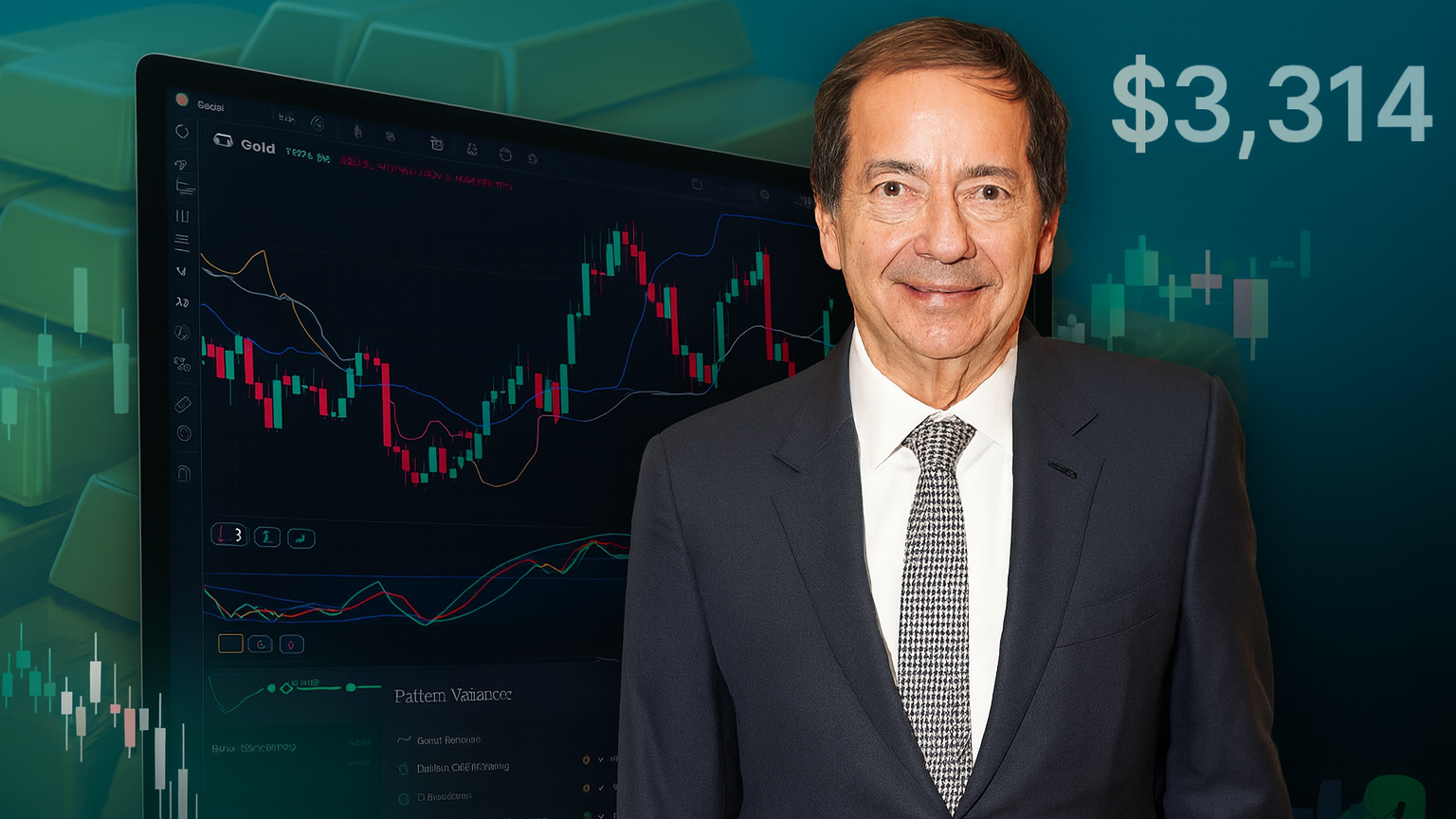Explore the benefits of buy-and-hold investing, including compounding returns, cost efficiency, and strategies for long-term wealth accumulation.
Buy-and-hold investing is a simple, long-term strategy that focuses on purchasing quality assets and holding them through market ups and downs. Why does it work? Here’s the key:
- Compounding Power: Reinvesting dividends can drive a large share of long-run equity returns. See compound interest in action.
- Cost Efficiency: Fewer trades mean lower fees and taxes.
- Proven Results: Over long horizons, the S&P 500 has delivered ~10% average annual returns (nominal). Source.
For example, starting early matters: Phyllis invested $5,000 annually for just 10 years and grew $50,000 into $600,000 by age 58. Meanwhile, Donny invested three times as much over 30 years but ended up with less.
This strategy thrives on patience, diversification, and consistency. Whether you’re targeting retirement, education savings, or wealth building, buy-and-hold investing offers a reliable way to grow your money over time.
Buy-and-Hold Investing: The Long‑Term Wealth‑Building Strategy
What is Buy-and-Hold Investing?
Buy-and-hold investing is a long-term approach where investors focus on holding quality assets over time, rather than frequently buying and selling. Unlike active trading, which relies on market timing, this strategy aims to grow wealth steadily by staying invested for the long haul. Let’s dive into the key principles that make it effective.
Basic Principles
This strategy requires patience and discipline. Instead of reacting to short-term market movements, investors hold onto their assets to benefit from their long-term growth potential. To understand market swings better, see this overview of options market volatility.
| Strategy Element | Buy-and-Hold | Active Trading |
|---|---|---|
| Time Required | Minimal monitoring needed | Constant attention required |
| Transaction Costs | Low, due to fewer trades | High, due to frequent trades |
| Tax Efficiency | Better for long-term gains | Higher short-term tax impact |
| Risk Management | Focus on diversification | Relies on timing and analysis |
Past Market Performance
Historical data highlights the strength of the buy-and-hold approach:
- Since 1926, U.S. stocks (S&P 500 total return) have compounded at roughly 10% annually, illustrating the power of staying invested over time. Annual totals.
- Avoiding market timing helps: missing just a handful of the market’s strongest days can materially reduce long-term returns. Details.
While the data shows its potential, this strategy isn’t without challenges.
Common Challenges
Market Volatility: Market downturns can cause temporary drops in portfolio value. For instance, during the 2008 financial crisis, many portfolios lost 30–50% of their value before recovering in the following years.
Opportunity Cost: Holding assets long-term might mean missing out on short-term gains. However, studies reveal that efforts to time the market often result in lower returns, as investors risk missing critical recovery periods.
Portfolio Management: Regular reviews are essential to ensure your investments align with your goals. Diversification and rebalancing are key when allocations drift.
"Buying and holding equities in the long run has helped investors historically. Investors also need to look at other factors, like how much short-term volatility in stock prices they're willing to tolerate." - Rob Haworth, Senior Investment Strategy Director, U.S. Bank Asset Management
Selecting Assets for Buy-and-Hold
Choosing the right assets is crucial for long-term success in buy-and-hold investing. By carefully evaluating financial metrics, market position, and stability, you can create a portfolio that weathers market ups and downs while delivering steady returns.
How to Pick Stocks
When selecting stocks, focus on companies with solid fundamentals and a history of performance. Here are some key financial metrics to consider:
| Metric | Healthy Range | Why It Matters |
|---|---|---|
| Price-to-Earnings (P/E) | 15–25 | Indicates a reasonable valuation |
| Price-to-Book | 1–3 | Suggests fair market value |
| Return on Equity (ROE) | 10–20% | Reflects management efficiency and growth |
| Debt-to-Equity | Below 1.0 | Signals financial stability |
In addition to these numbers, look at the company’s competitive edge—its economic moat. This could include factors like brand power, intellectual property, or market dominance, all of which support long-term profitability. What is an economic moat?
Building a Mixed Portfolio
Diversification is a key strategy for balancing risk and growth. A well-rounded portfolio should include a variety of asset classes, industries, and even geographic regions. Here's an example of how allocations might vary based on risk tolerance:
| Portfolio Component | Conservative | Balanced | Aggressive |
|---|---|---|---|
| Stocks | 20% | 40% | 70% |
| Bonds | 60% | 40% | 5% |
| Real Estate | 10% | 10% | – |
| Commodities | – | 10% | 5% |
| Cash | 10% | – | – |
Diversification helps reduce risk during market downturns. For instance, during the 2008–2009 financial crisis, a diversified portfolio performed better than one heavily weighted in stocks. Additionally, dividend-paying stocks can boost long-term returns.
Dividend Stock Benefits
Dividend stocks offer both income and growth potential. Many S&P 500 companies pay dividends with yields typically ranging from 1% to 3%, depending on market conditions. When evaluating dividend stocks, focus on these areas:
- Dividend Sustainability: Check the company’s dividend history and ensure payout ratios stay below 60–70%.
- Financial Health: Analyze debt levels, cash flow, and earnings growth.
- Industry Position: Look at competitive advantages and market share.
"Companies that have consistently increased their dividends tend to be more stable, higher-quality businesses, which historically have weathered downturns and are more likely to have the ability to pay dividends consistently." – Kirsten Cabacungan, investment strategist in the Chief Investment Office for Merrill and Bank of America Private Bank
Avoid chasing the highest yields, as this can be risky. Instead, prioritize companies with moderate but growing dividends, backed by strong fundamentals and consistent earnings.
Starting Your Buy-and-Hold Plan
Create a solid buy-and-hold strategy by setting clear objectives and following a structured plan.
Investment Goals and Timelines
Start by defining your financial goals to shape your investment approach.
"Just take it one step at a time, starting with identifying what you're investing for"
| Investment Goal | Timeline | Portfolio Focus |
|---|---|---|
| Home Purchase | 3-5 years | Conservative, income-driven |
| Children's Education | 5-15 years | Balanced growth and stability |
| Early Retirement | 15+ years | Growth-focused |
| Regular Retirement | 20-30 years | Long-term growth |
Once your goals are clear, structure your portfolio to align with your timeline and comfort with risk.
Portfolio Structure
Timing the market often backfires. For example, missing the 10 best market days over a decade can meaningfully reduce returns. See analysis. A well-designed portfolio can help you stay invested through market ups and downs.
| Portfolio Type | Stocks | Bonds | Cash | Best For |
|---|---|---|---|---|
| Income | 30% | 60% | 10% | Near retirement |
| Balanced | 60% | 35% | 5% | Mid-term goals |
| Growth | 80% | 15% | 5% | Long-term wealth |
Dollar-Cost Averaging Methods
Regular contributions are key to a disciplined investment strategy. Market fluctuations are inevitable, but dollar-cost averaging helps turn those fluctuations into opportunities. What is dollar‑cost averaging?
"Volatility is a normal and even integral part of investing. Dollar-cost averaging could help you filter the noise and view periods of weakness as buying opportunities"
Here’s how to make it work:
- Set a fixed amount to invest on a consistent schedule.
- Automate transfers to streamline the process.
- Focus on broad market index funds or diversified ETFs.
This steady, long-term approach is supported by the market's historical pattern of delivering positive returns.
Risk Control Methods
Managing risk effectively allows you to navigate market ups and downs while safeguarding your investments.
Risk Tolerance Evaluation
Risk tolerance is your ability and willingness to handle market uncertainty.
"When you invest, risk is the effect of uncertainty on progress toward your goals."
| Factor | Criteria | Effect |
|---|---|---|
| Time Horizon | Years until goal | Longer horizons can handle more risk |
| Financial Stability | Emergency savings, debt level | Greater stability supports higher risk |
| Income Sources | Salary, pension, other investments | Multiple sources allow for more risk |
| Investment Knowledge | Market understanding, experience | Better knowledge improves risk management |
Once you understand your risk profile, adjust your portfolio to align with it.
Portfolio Rebalancing
Rebalancing ensures your portfolio stays aligned with your risk tolerance, but only rebalance when your allocations drift significantly.
| Rebalancing Method | Best For | Key Consideration |
|---|---|---|
| Calendar-Based (Annual) | Most investors | Simple and consistent approach |
| Percentage-Based (5-10% drift) | Active managers | Reduces unnecessary trades |
| Cash Flow | Regular contributors | Offers tax efficiency |
Market Drop Strategies
In volatile markets, take protective steps to shield your portfolio.
Conservative Asset Allocation
Consider high-quality U.S. Treasury bonds, known for their inverse sensitivity to equity sell‑offs. About Treasury bonds.
Safe Harbor Investments
During downturns, focus on assets like:
- U.S. Treasury bonds
- Gold, which has shown low long-term correlation with stocks
- Defensive stocks with strong balance sheets
- Cash reserves for seizing opportunities
"You must always be prepared for the unexpected, including sudden, sharp downward swings in markets and the economy. Whatever adverse scenario you can contemplate, reality can be far worse." - Seth Klarman
Effective risk management is about taking risks that align with your goals and investment timeline.
Increasing Long-Term Returns
Combining the power of compounding with smart tax strategies can significantly grow your buy-and-hold investments over time.
Understanding Compound Growth
Compound growth happens when your investment returns generate even more returns—a snowball effect that grows larger the longer it rolls.
For example, a $10,000 investment earning 7% annually grows to $76,122.55 after 30 years. Adding $500 monthly to this investment increases its value to $642,887.27.
| Compounding Frequency | 10-Year Returns (10% Annual Rate) |
|---|---|
| Monthly | $10,079.20 |
| Quarterly | $9,964.95 |
| Semi-annually | $9,799.32 |
| Annually | $9,487.17 |
To make the most of compounding:
- Start as early as possible to allow more time for growth.
- Contribute consistently.
- Minimize investment fees.
- Automatically reinvest all returns.
Tax-efficient planning can further boost these gains.
Tax Planning for Investors
Strategic tax planning helps preserve more of your capital, allowing compounding to work harder. In 2025, you can contribute up to $7,000 to IRAs (or $8,000 if you're 50 or older) and $23,500 to 401(k)s (or $30,500 if you're 50 or older). IRS announcement. These contributions reduce your tax burden, leaving more money in your portfolio to grow.
An asset location strategy can maximize tax efficiency by dividing investments between taxable and tax-advantaged accounts:
| Taxable Accounts (e.g., brokerage accounts) | Tax-Advantaged Accounts (e.g., IRAs, 401(k)s) |
|---|---|
| Long-term individual stock holdings | Short-term individual stock holdings |
| Tax-managed funds, index funds, ETFs | Actively managed funds with high short-term gains |
| Qualified dividend stocks and mutual funds | Taxable bond funds and high-yield bond funds |
| Series I bonds, municipal bond funds | Real estate investment trusts (REITs) |
Boosting Returns with Dividend Reinvestment
Reinvesting dividends can dramatically improve your long-term returns. From 1928 to 2021, the S&P 500 delivered an annual return of 9.9% with dividends reinvested, compared to 6.1% from price appreciation alone.
Here’s how a $1,000 investment in the S&P 500 in 1928 would have grown:
- $258,383 without reinvesting dividends.
- $380,250 with dividends taken as cash.
- $7,008,076 with dividends reinvested.
To make the most of dividend reinvestment:
- Use tax-advantaged accounts to reduce tax impact.
- Consider DRIP programs for commission-free reinvestment.
- Keep an eye on stock valuations before reinvesting automatically.
- Focus on reliable, blue-chip dividend-paying stocks.
Using LuxAlgo for Buy-and-Hold
A disciplined approach and solid analysis are key to succeeding with a buy-and-hold strategy. LuxAlgo provides powerful features on TradingView and an AI Backtesting platform at luxalgo.com/backtesting to help make informed, data-driven decisions. Below are some of the ways these capabilities support every stage of a buy-and-hold plan.
LuxAlgo AI Analysis Features
LuxAlgo’s exclusive toolkits simplify identifying long-term opportunities. For instance, the Price Action Concepts (PAC) toolkit automates price action analysis by focusing on market structure and highlighting key liquidity zones critical for long-term entries. The Oscillator Matrix helps spot trend reversals and divergences (money flow–based), while Signals & Overlays provides advanced signals and overlays.
| Analysis Feature | How It Helps |
|---|---|
| PAC Toolkit | Finds strong support/resistance zones |
| Oscillator Matrix | Spots trend reversals and divergences |
| Signals & Overlays | Generates adaptive signals and overlays |
The AI Backtesting Assistant further enhances decision-making by scanning strategies built with these capabilities to uncover effective approaches, helping investors refine their entry and exit points. You can learn more in the AI Backtesting docs.
Testing Investment Strategies
LuxAlgo’s Ultimate plan ($59.99/month) includes backtesting features that enable users to test strategies across various timeframes, with deep optimization and automated scans. On TradingView you can also use the PAC Backtester and explore its entry rules.
"Lux Algo has really stepped my trading up, there is a setup for any style of trading you prefer which is very nice you don't have to put yourself in a box metaphorically speaking"
LuxAlgo Trading Community
In addition to its advanced features, LuxAlgo fosters a supportive trading community where long-term investors can share ideas and receive real-time assistance. Premium and Ultimate subscribers benefit from alerts and community insights. To explore scanning workflows, see our Screeners overview, the PAC Screener guide, and TradingView pages for the PAC Screener and S&O Screener. You can also review the OSC Screener.
The Discord community includes:
- Quick responses from admins
- Strategy discussions
- Regular tutorials
- Active conversations about long-term methods
"The leaders are always providing tutorials and main suggested trading strategies. I have even made a good friend in the channel with who I discuss strategies and ideas"
With over 15,000 active members, the community offers a wide range of perspectives on long-term investing, along with constant support and frequent updates to its features. New users can get set up quickly with the TradingView setup guide.
Conclusion
Buy-and-hold investing has consistently proven its ability to grow wealth over time, supported by decades of market data. The strategies shared above aim to help investors achieve long-term growth through patience and disciplined decision-making.
Take this example: If you had purchased 100 AAPL shares in June 2010, by June 2024, your investment would have grown substantially—highlighting the potential of holding high-quality assets through various market cycles.
Key factors for success in buy-and-hold investing include selecting strong assets, diversifying wisely, utilizing advanced features like LuxAlgo’s Price Action Concepts, and reinvesting dividends—which often make up a meaningful share of long-run total returns.
References
LuxAlgo Resources
- LuxAlgo — Official Site
- Discover Features
- AI Backtesting Assistant
- AI Backtesting — Introduction
- Signals & Overlays
- Price Action Concepts (PAC) — Intro
- Oscillator Matrix — Indicator
- Screeners — Overview
- PAC Screener — Docs
- PAC Screener — TradingView
- S&O Screener — TradingView
- OSC Screener — Indicator
- PAC Backtester — Indicator
- PAC Backtester — Entry Rules
- TradingView Setup Guide
External Resources
- S&P 500 Average Returns & Historical Performance — Investopedia
- S&P 500 Total Returns by Year — SlickCharts
- Don’t Miss the Market’s Best Days — Fidelity
- Compound Interest Calculator — Investor.gov
- Dollar‑Cost Averaging — Investor.gov
- Discover Options Volatility — CME Group
- Treasury Bonds at a Glance — TreasuryDirect
- What Is an Economic Moat? — Investopedia
- 2025 Contribution Limits — IRS








